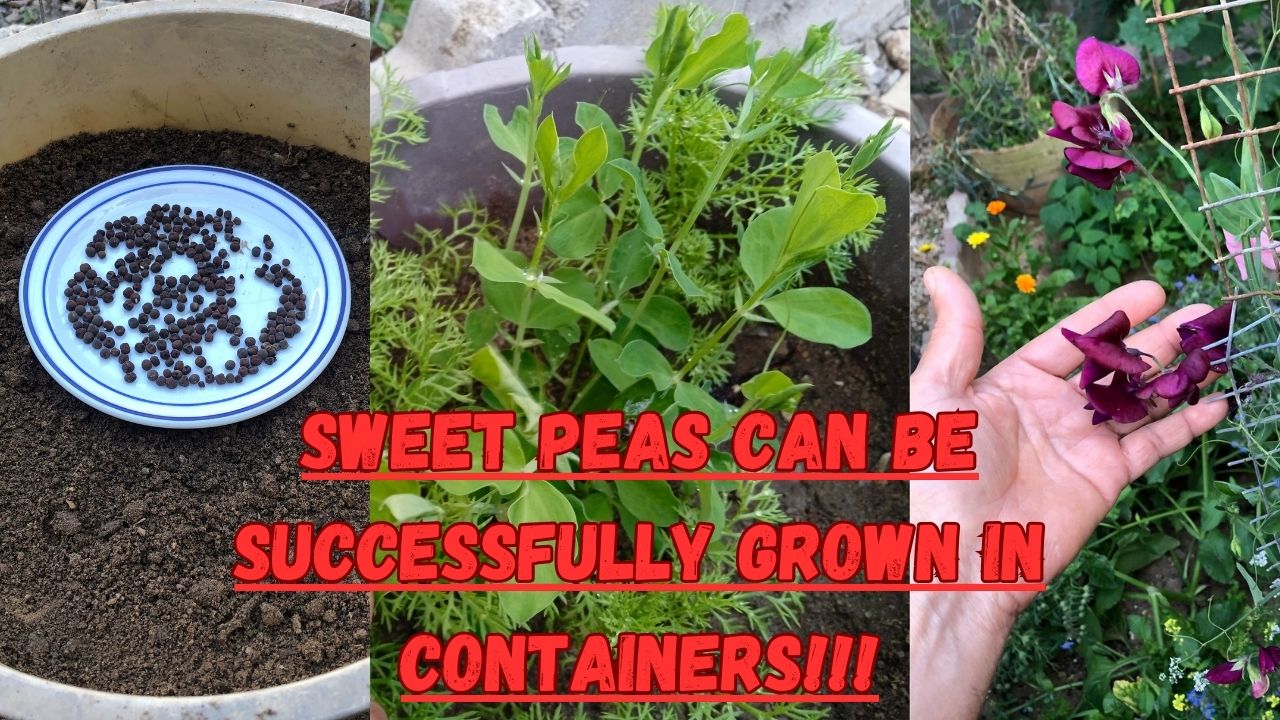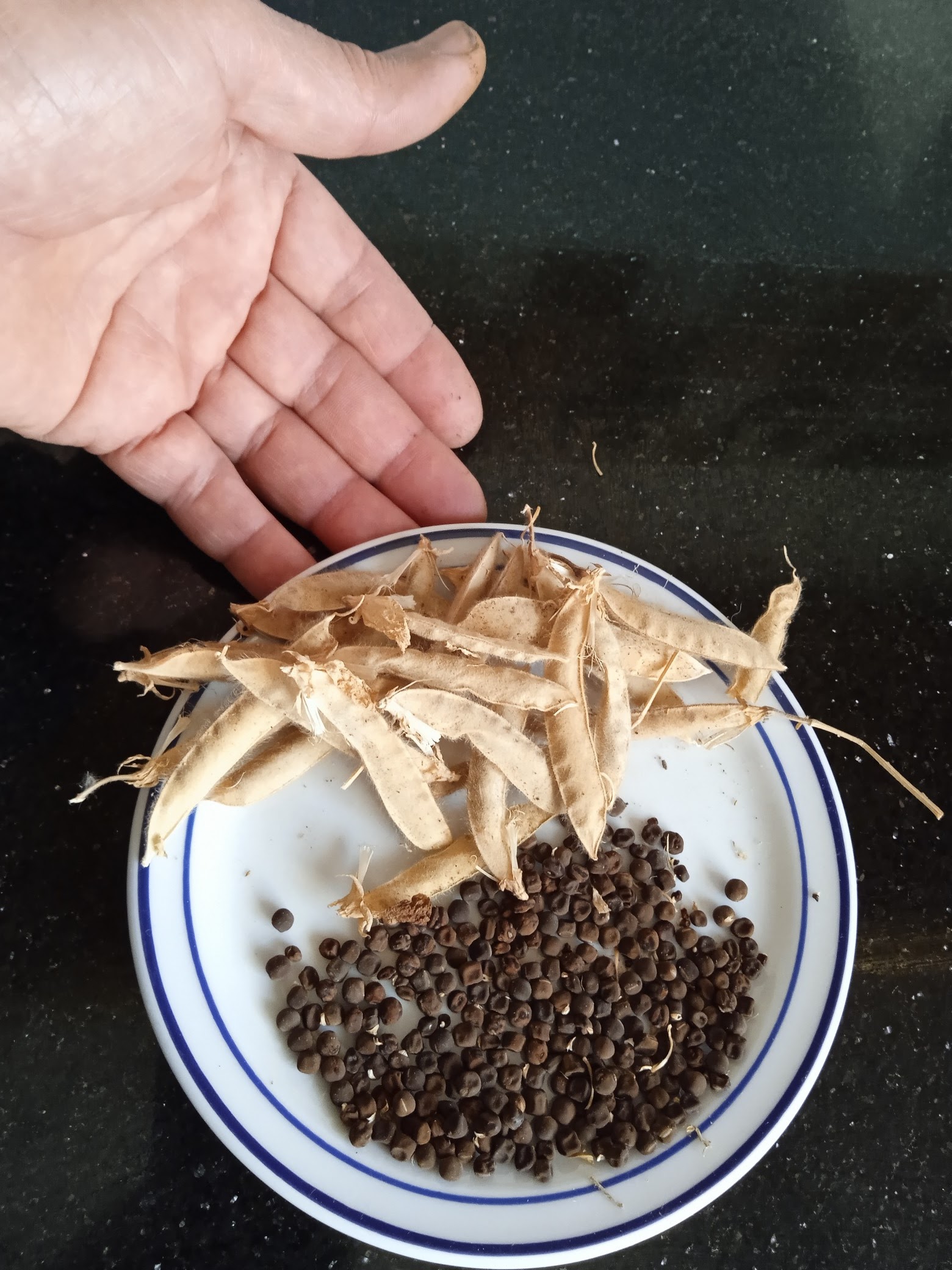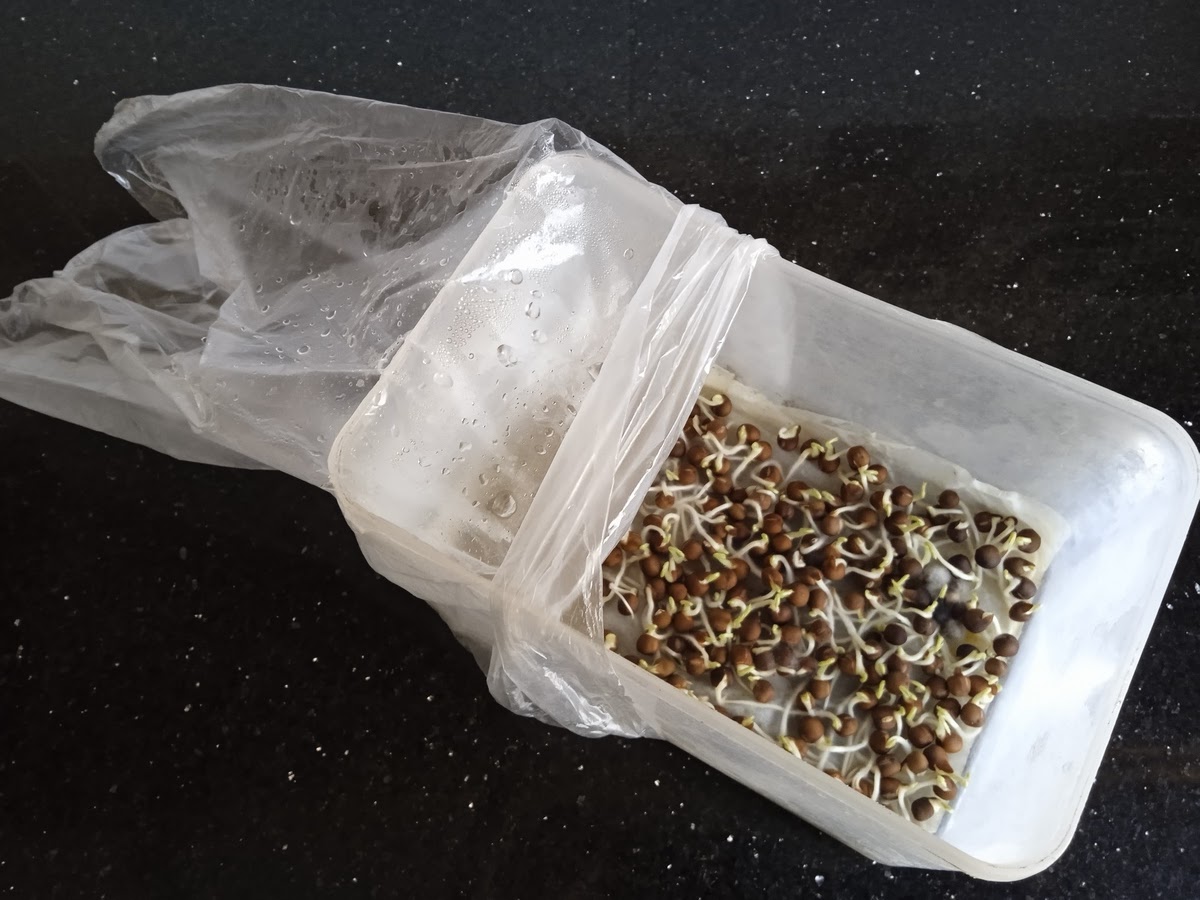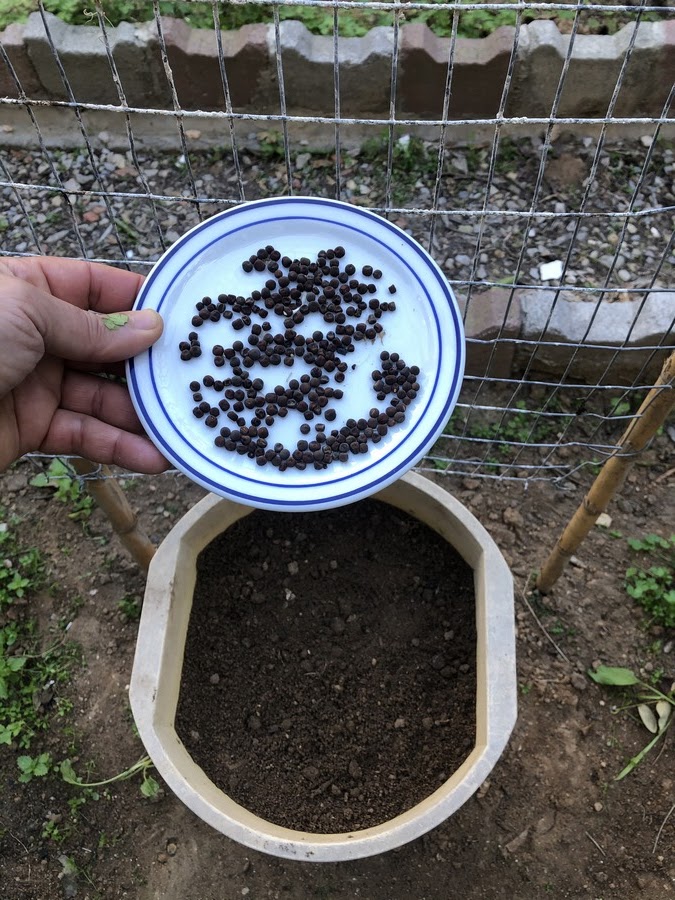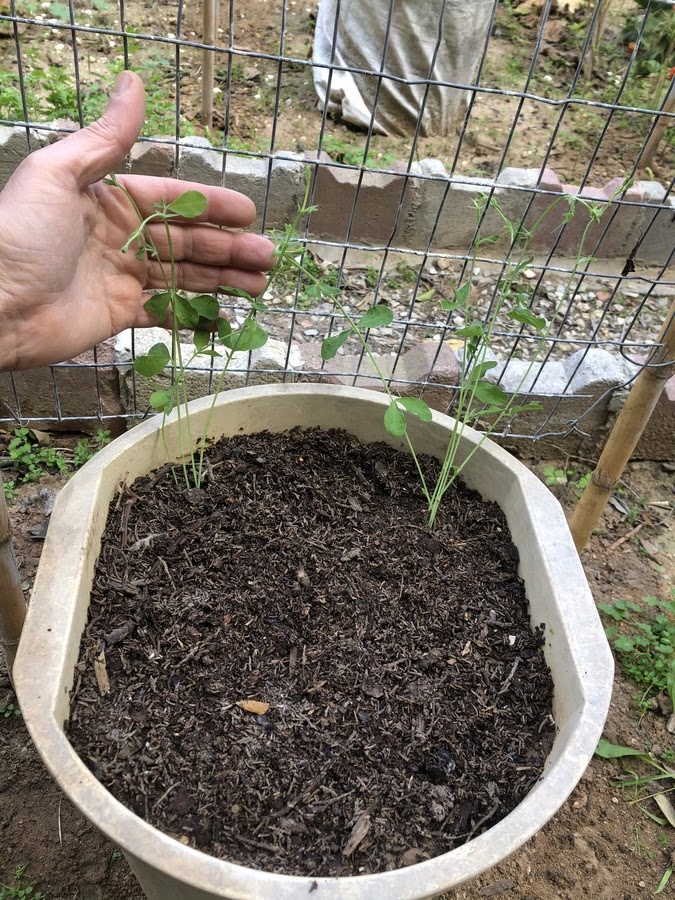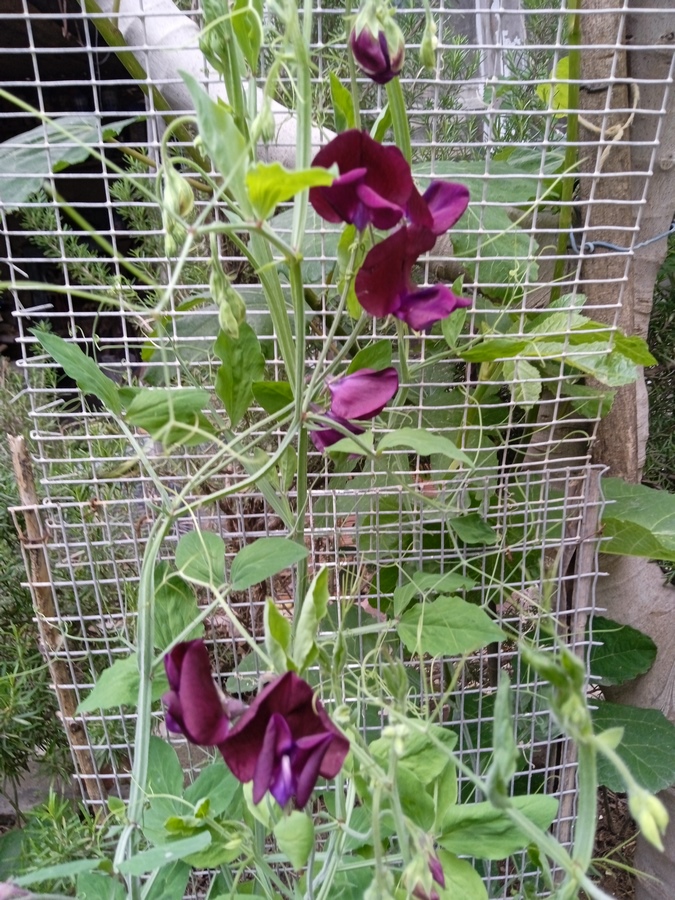Welcome to our comprehensive guide on growing sweet peas from seed in containers! If you're looking to add a burst of color, fragrance, and charm to your outdoor space, sweet peas are the perfect choice. These delicate and aromatic flowers are beloved by gardeners for their beauty and versatility.
In this comprehensive guide, we will take you through every step to cultivate sweet peas in containers. We start with seed selection, care for seedlings, and nurturing them until their glorious bloom. Whether you're a gardening expert or just starting out, we have everything you need to embark on this fragrant adventure.
Get ready to embark on a delightful journey of planting, nurturing, and enjoying the splendor of sweet peas right at your fingertips. Let's dive in and discover the secrets to cultivating these enchanting blooms in containers, bringing joy and vibrancy to your garden or balcony space.
Overview of sweet peas Sweet peas:
(Lathyrus odoratus) are flowering plants known for their delicate, colorful blooms and sweet fragrance. They belong to the legume family and are native to the Mediterranean region
Benefits of growing sweet peas in containers:
Space-saving: Ideal for those with limited garden space or balconies.
Control: Easier to control soil quality, moisture, and sunlight exposure.
Aesthetics: Containers offer versatility in arranging and displaying sweet peas.
Protection: Containers can be moved to shelter plants from adverse weather conditions or pests.
What to expect in this guide:
This guide will provide step-by-step instructions on how to successfully grow sweet peas from seed in containers. From selecting the right container to caring for your plants, you'll find all the information you need to cultivate beautiful sweet peas.
Choosing the Right Container
A. Types of containers suitable for sweet peas
When it comes to cultivating sweet peas in containers, choosing the right vessel is paramount. Here are some options to consider:
Terracotta Pots: Classic and versatile, terracotta pots provide excellent breathability for roots and add a rustic charm to your garden.
Plastic Pots: Lightweight and affordable, plastic pots come in various sizes and colors, offering flexibility and ease of handling.
Wooden Crates or Boxes: For a rustic touch, consider repurposing wooden crates or boxes. Ensure they have proper drainage holes drilled at the bottom.
Hanging Baskets: Ideal for vertical gardening or decorating small spaces, hanging baskets allow sweet peas to cascade gracefully, creating a stunning display.
B. Size and drainage considerations
The size of your container is crucial for the health and growth of your sweet peas. Opt for containers that provide ample space for root development, typically at least 12 inches deep and wide. This ensures that the roots have enough room to spread and access nutrients. Additionally, proper drainage is essential to prevent waterlogging, which can lead to root rot. Choose containers with drainage holes at the bottom to allow excess water to escape freely. Elevating the containers slightly or placing them on pot feet can further improve drainage.
C. Material options for containers
Containers come in various materials, each with its own set of pros and cons:
Plastic: Lightweight and affordable, plastic containers are easy to move around and come in numerous sizes and colors. However, they may degrade over time when exposed to sunlight and can retain more heat than other materials.
Terracotta: Known for their breathability, terracotta pots provide excellent aeration for roots. They also have a timeless appeal but can be prone to cracking in freezing temperatures.
Wood: Wooden containers offer a natural, rustic aesthetic and excellent insulation for roots. Cedar and redwood are popular choices due to their durability and resistance to decay. However, wooden containers may rot over time and require occasional maintenance.
Metal: Containers made of metal, such as galvanized steel or aluminum, are sturdy and long-lasting. They can withstand harsh weather conditions but may heat up quickly in direct sunlight, potentially harming the roots.
Consider these factors carefully when selecting the right container for your sweet peas, ensuring optimal growing conditions for a bountiful harvest.
Selecting the Right Seeds
Embarking on your sweet pea journey begins with selecting the perfect seeds. In this section, we'll delve into the nuances of choosing high-quality seeds tailored for container growth.
A. Understanding the different varieties of sweet peas
Dwarf Varieties: Ideal for containers with limited space, dwarf sweet peas stay compact and produce smaller blooms, making them perfect for window boxes and hanging baskets.
Climbing Varieties: These tall and vigorous varieties thrive with vertical support and are well-suited for trellises or obelisks in larger containers.
Trailing Varieties: Known for their graceful cascading habit, trailing sweet peas add a touch of elegance to hanging baskets and tall containers, creating stunning displays.
B. Where to purchase high-quality seeds
Local Nurseries and Garden Centers: Visit your nearest nursery or garden center to explore a variety of sweet pea seed options suited to your local climate and growing conditions.
Online Seed Retailers: Numerous reputable online retailers specialize in high-quality seeds, offering a vast selection of sweet pea varieties and hybrids for container gardening.
Seed Exchanges and Swaps: Participate in local seed exchanges or gardening communities to obtain unique heirloom varieties and connect with fellow enthusiasts.
C. Tips for selecting the best seeds for container growth
Choose Fresh Seeds: Opt for seeds from reputable sources with a high turnover to ensure freshness and viability.
Check Germination Rates: Look for seeds with high germination rates to maximize your chances of successful seedling establishment.
Consider Container Compatibility: Select seeds specifically labeled or recommended for container growth, as they are often bred for compact habits and adaptability to confined spaces.
Preparing the Container
With your seeds in hand, it's time to prepare the stage for their grand performance. In this section, we'll cover essential steps to ensure your containers are primed and ready for planting.
A. Cleaning and sterilizing the container
Remove Debris: Thoroughly clean the container, removing any dirt, debris, or old plant material to prevent the spread of pests and diseases.
Sterilization: For optimal hygiene, sterilize the container by soaking in a solution of one part bleach to nine parts water for optimal hygiene, then rinse well and let air dry.
B. Adding drainage materials
Gravel or Stones: Create a layer of drainage at the bottom of the container by adding a few inches of gravel or small stones. This helps prevent waterlogging and promotes healthy root growth.
Mesh or Landscape Fabric: Place a piece of mesh or landscape fabric over the drainage layer to prevent soil from washing away while still allowing excess water to escape.
C. Choosing the right potting mix
Quality Potting Mix: Select a well-draining potting mix specifically formulated for container gardening, preferably one enriched with organic matter to provide essential nutrients.
Avoid Garden Soil: Refrain from using garden soil in containers, as it can become compacted and hinder drainage, leading to poor plant growth.
By meticulously selecting the right seeds and preparing your containers with care, you're laying the foundation for a flourishing sweet pea spectacle.
Planting Sweet Pea Seeds
With your containers ready, let's embark on the journey of planting sweet pea seeds. In this guide, we'll take you through the crucial steps to ensure successful sowing, setting the foundation for a thriving sweet pea garden.
A. Optimal planting time
Cool Weather Preference: Sweet peas thrive in cool weather, so aim to plant your seeds in early spring when the soil temperature reaches around 50°F (10°C). In warmer climates, consider planting in late fall for winter blooms.
Frost Protection: Keep an eye on the weather forecast and be prepared to protect newly planted seeds from late frosts with row covers or cloches.
B. Seed preparation techniques
Scarification: Sweet pea seeds need scarification because their hard seed coats prevent water from getting in, which can make it hard for them to germinate. - To scarify seeds, you can gently rub them with sandpaper or soak them in warm water for a day before planting.
Pre-Soaking: Some gardeners find that soaking sweet pea seeds in water for 12 to 24 hours before planting helps them germinate faster. - Soaking the seeds softens their seed coats and makes it easier for water to get in, speeding up the germination process.
C. Proper depth and spacing of seeds
Planting Depth: Sow sweet pea seeds approximately 1 inch (2.5 cm) deep in the potting mix, covering them lightly with soil.
Spacing: Space seeds 2 to 3 inches (5 to 7.5 cm) apart in the container to allow ample room for root development and airflow between seedlings.
Caring for Sweet Pea Seedlings
After planting your seeds, it's important to give them the necessary care and attention to help them grow successfully. This section will cover key steps in fostering sweet pea seedlings from start to finish.
A. Watering requirements
Consistent Moisture: Keep the potting mix consistently moist but not waterlogged, watering the seedlings whenever the top inch of soil feels dry to the touch.
Avoid Overhead Watering: To prevent fungal diseases, water the soil directly at the base of the seedlings rather than overhead.
B. Providing adequate sunlight
Full Sun to Partial Shade: Sweet peas thrive in full sun to partial shade, so place your containers in a location where they'll receive at least 6 hours of sunlight per day.
Protect from Extreme Heat: In hot climates, provide afternoon shade or use shade cloth to protect seedlings from excessive heat.
C. Feeding and fertilizing tips
Balanced Fertilizer: Once seedlings have developed their second set of true leaves, feed them with a balanced liquid fertilizer every 2-4 weeks to support healthy growth and blooming.
Avoid Excess Nitrogen: Too much nitrogen can result in lush foliage at the expense of flower production, so opt for a fertilizer with balanced NPK ratios (nitrogen, phosphorus, and potassium).
By adhering to proper watering, sunlight, and feeding practices, you'll nurture your sweet pea seedlings into robust plants that will soon reward you with a profusion of fragrant blooms.
Supporting Sweet Peas as They Grow
As your sweet peas begin their ascent towards floral splendor, providing adequate support is essential for their vertical journey. In this section, we'll explore the significance of support structures and techniques for training sweet peas to climb with grace.
A. Importance of support structures
Stability: Support structures such as trellises, obelisks, or stakes offer stability for sweet pea vines, preventing them from toppling over and sustaining damage.
Vertical Growth: By providing a framework for upward growth, support structures encourage sweet peas to reach their full potential, maximizing space and showcasing their blooms.
B. Types of trellises and supports suitable for containers
Trellises: Choose trellises specifically designed for containers, ensuring they're sturdy enough to support the weight of climbing sweet peas. Options include wooden or metal trellises with grid patterns for vines to cling to.
Obelisks: These pyramid-shaped structures provide a focal point in container gardens while offering ample support for climbing sweet peas. Look for obelisks with wide bases for stability.
Stakes and Netting: For smaller containers or hanging baskets, stakes or netting can provide vertical support for sweet pea vines. Secure stakes firmly in the potting mix, and train vines to weave through netting as they grow.
C. Training sweet peas to climb
Gentle Guidance: As sweet pea vines begin to grow, gently guide them toward support structures, encouraging them to grasp onto trellises or stakes with their tendrils.
Loose Tying: Use soft garden twine or plant ties to loosely secure vines to support structures, avoiding tight binding that can constrict growth or cause damage.
Regular Pruning: Remove any side shoots or tendrils that aren't attached to support structures to redirect the plant's energy toward upward growth.
By providing sturdy support structures and guiding sweet pea vines as they climb, you'll create a captivating vertical display that enhances the beauty of your container garden.
Common Pests and Diseases
While sweet peas are generally resilient plants, they can fall prey to certain pests and diseases that may hamper their growth and vitality. In this section, we'll discuss how to identify and combat common threats to your sweet pea plants.
A. Identifying common pests that affect sweet peas
Aphids: These small, sap-sucking insects can cause stunted growth and distorted foliage, often congregating on the undersides of leaves.
Slugs and Snails: These mollusks feed on young sweet pea seedlings, leaving behind ragged edges on leaves and stems.
Powdery Mildew: A fungal disease characterized by a white powdery coating on leaves, powdery mildew can weaken plants and inhibit flowering.
B. Preventative measures to keep pests at bay
Companion Planting: Interplant aromatic herbs such as mint, rosemary, or lavender to deter aphids and other insect pests.
Mulching: Apply a layer of organic mulch around sweet pea plants to create a barrier against slugs and snails.
Proper Watering: Avoid overwatering, as excess moisture can create favorable conditions for fungal diseases like powdery mildew.
C. Treating diseases that may impact your plants
Pruning: Remove infected plant parts promptly and dispose of them to prevent the spread of disease. Ensure proper airflow around plants by thinning out dense foliage.
Fungicides: In severe cases of powdery mildew, apply a fungicidal spray according to label instructions to combat the spread of the fungus.
By remaining vigilant and implementing preventative measures, you can safeguard your sweet pea plants against common pests and diseases, ensuring they thrive and flourish in your container garden.
Harvesting and Enjoying Your Sweet Peas
When your sweet peas are at their best, it's time to enjoy their beauty and scent by picking them. We will discuss when to harvest sweet peas, how to do it correctly, and how to appreciate their beauty in this section.
A. Signs that sweet peas are ready to be harvested
Fully Developed Pods: Sweet pea pods should be plump and well-filled with seeds, indicating that the peas inside have reached maturity.
Vibrant Colors: Look for vibrant colors and strong fragrances in sweet pea blooms, signaling that they're at their peak of perfection.
B. How to properly harvest sweet peas
Use Scissors or Shears: Snip sweet pea stems just above a leaf node using sharp scissors or garden shears to encourage continued flowering.
Harvest Regularly: Harvest sweet peas regularly to encourage the production of new blooms and prolong the flowering season.
C. Ways to enjoy the beauty and fragrance of sweet peas
Fresh Bouquets: Arrange freshly harvested sweet pea blooms in a vase to enjoy their beauty and fragrance indoors.
Dried Flowers: Hang harvested sweet pea stems upside down in a dry, well-ventilated area to dry, preserving their beauty for use in dried flower arrangements.
Decorative Touches: Use sweet pea flowers to adorn gifts, table settings, or special occasions, adding a touch of elegance and charm to any setting.
Watch: In My Garden-Sweet Peas-
Conclusion
As we wrap up our exploration of the charming realm of sweet peas grown from seeds in containers, let's recapitulate the key takeaways and revel in the pleasure of cultivating these enchanting blooms.
A. Recap of key points discussed
Choosing Containers: Select containers with adequate drainage and support structures suitable for sweet pea growth.
Planting Seeds: Sow sweet pea seeds at the optimal depth and spacing, providing proper care to encourage healthy seedling growth.
Supporting Growth: Provide sturdy support structures and train sweet peas to climb, maximizing space and enhancing their aesthetic appeal.
Managing Pests and Diseases: Monitor for common pests and diseases, implementing preventative measures to protect your plants.
Harvesting and Enjoyment: Harvest sweet peas at their peak of perfection and savor their beauty and fragrance in various delightful ways.
B. Final thoughts on growing sweet peas from seed in containers
Growing sweet peas from seed in containers offers a rewarding and enjoyable gardening experience, allowing you to create a vibrant tapestry of colors and scents in even the smallest of spaces. With proper care and attention, your sweet pea container garden will flourish, bringing joy and beauty to your home or garden throughout the growing season.
I encourage you, dear readers, to embark on your own sweet pea container gardening adventure. Whether you're a seasoned gardener or a novice enthusiast, growing sweet peas from seed offers a delightful journey filled with beauty, fragrance, and the simple joys of nature. So gather your containers, select your seeds, and let the magic of sweet peas transform your outdoor spaces into enchanting floral sanctuaries.
If you found this guide helpful and inspiring, don't forget to spread the love by liking, commenting, and sharing it with your fellow gardening enthusiasts. Your engagement helps support the gardening community and encourages others to embark on their own sweet pea container gardening journey. Plus, sharing your experiences and tips can foster a vibrant exchange of knowledge and ideas among fellow gardeners. So, hit that like button, drop a comment sharing your thoughts or questions, and share this guide with friends and family who might also appreciate the beauty of growing sweet peas in containers. Happy gardening, and let's cultivate a thriving community together! 🌱💐🌼
Happy gardening!
Watch: Sweet Peas in Containers: A Beginner's Step-by-Step Guide
Frequently Asked Questions (FAQs)
Q: Can I grow sweet peas in containers on a balcony or patio?
A: Yes, sweet peas can be cultivated in containers on balconies, patios, or other sunny outdoor spaces. Make sure the containers provide adequate drainage and support structures for their climbing growth.
Q: How often should I water my sweet pea plants in containers?
A: Water sweet pea plants in containers regularly to keep the soil consistently moist but not waterlogged. Aim to water deeply whenever the top inch of soil feels dry to the touch.
Q: Do sweet peas need full sunlight to grow in containers?
A: Indeed, sweet peas require full sunlight in containers, therefore it is recommended to position them in a spot that gets 6-8 hours of direct sunlight daily.
Q: What type of fertilizer should I use for sweet peas in containers?
A: Use a balanced liquid fertilizer diluted to half strength to feed sweet pea plants in containers every 2-3 weeks during the growing season. Avoid overfertilizing, as this can lead to excessive foliage growth.
Q: How tall do sweet peas grow in containers?
A: Sweet pea plants in containers can grow between 3 to 6 feet or more, depending on the variety and growing conditions.
Q: Can I grow sweet peas indoors in containers?
A: Yes, sweet peas can be grown indoors in containers with sufficient sunlight or grow lights, ensuring optimal growth with proper temperature and humidity levels.
Q: When is the best time to plant sweet pea seeds in containers?
A: Plant sweet pea seeds in containers outdoors in early spring after the last frost date or indoors in late winter, around 4-6 weeks before the last frost date.
Q: How do I prevent pests and diseases from affecting my sweet pea plants in containers?
A: To prevent pests and diseases, regularly check sweet pea plants, maintain good sanitation, promote airflow and drainage, and consider using natural or organic remedies.
Q: Can I save seeds from my sweet pea plants grown in containers?
A: Seeds from mature sweet pea plants grown in containers can be saved by letting pods dry fully on the plant before harvesting, storing them in a cool, dry place for future planting.
Q: How long do sweet pea plants bloom in containers?
A: Sweet pea plants can bloom for several weeks to months in containers, depending on the variety and growing conditions. Regular deadheading (removing spent flowers) can encourage continuous blooming.
Related post: How to Transplant Sweet Peas Seedlings Into The Garden
Whether you need something to grow up fences or grow in containers, Sweet Peas are an awesome choice to brighten up your garden space with beauty and exquisite fragrance!
🛒Quality Sweet Pea Seeds
Affiliate Disclosure
In transparency and compliance with legal guidelines, please be aware that some of the links on this site are affiliate links. These are carefully chosen products that I have personally used, tested, and genuinely recommend. When you click and make a purchase through these links, I may earn a small commission, at no additional cost to you. This commission helps support the maintenance of this site, allowing me to continue providing valuable content and recommendations. Rest assured, my priority is to offer authentic and reliable information, and I only affiliate with products that align with the values and standards I uphold. Your trust means everything to me, and I appreciate your support. If you have any questions or concerns, please feel free to reach out. Thank you for being a valued part of our community!

